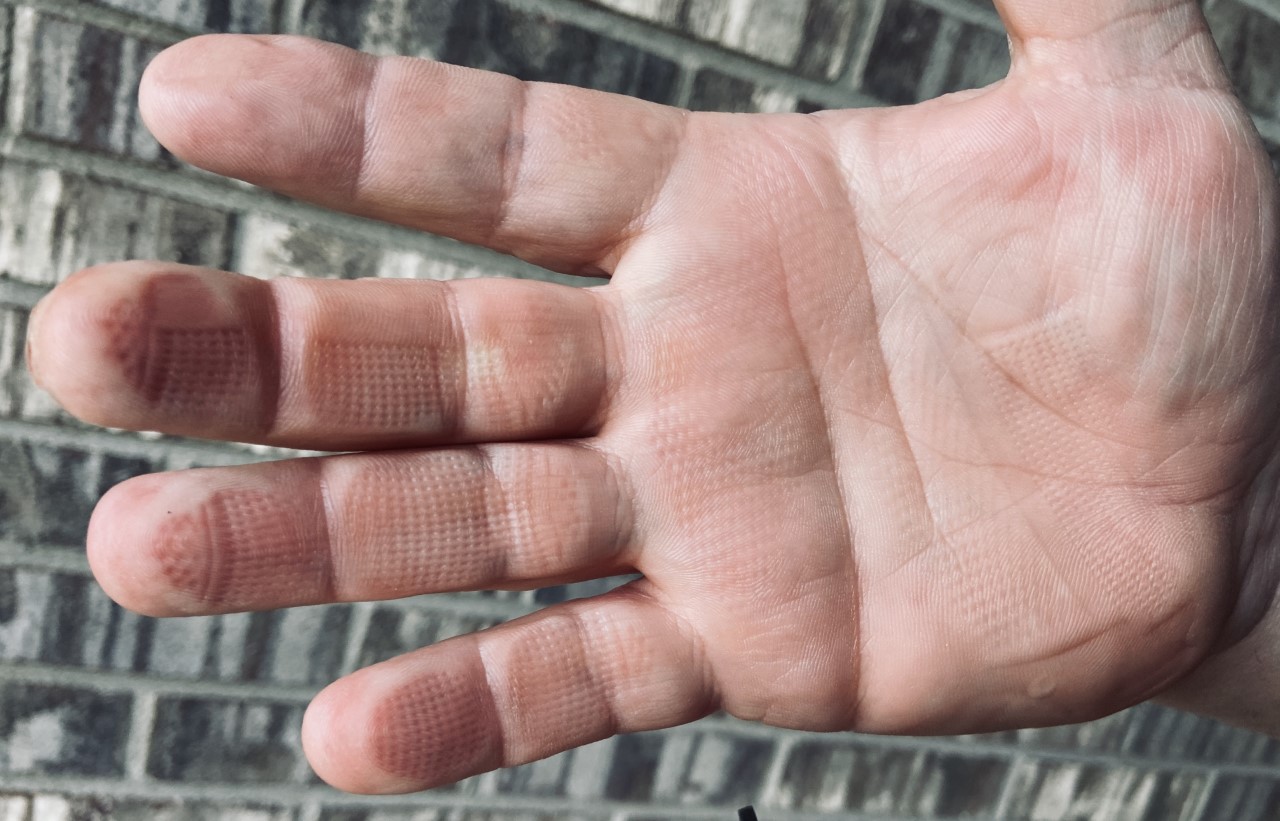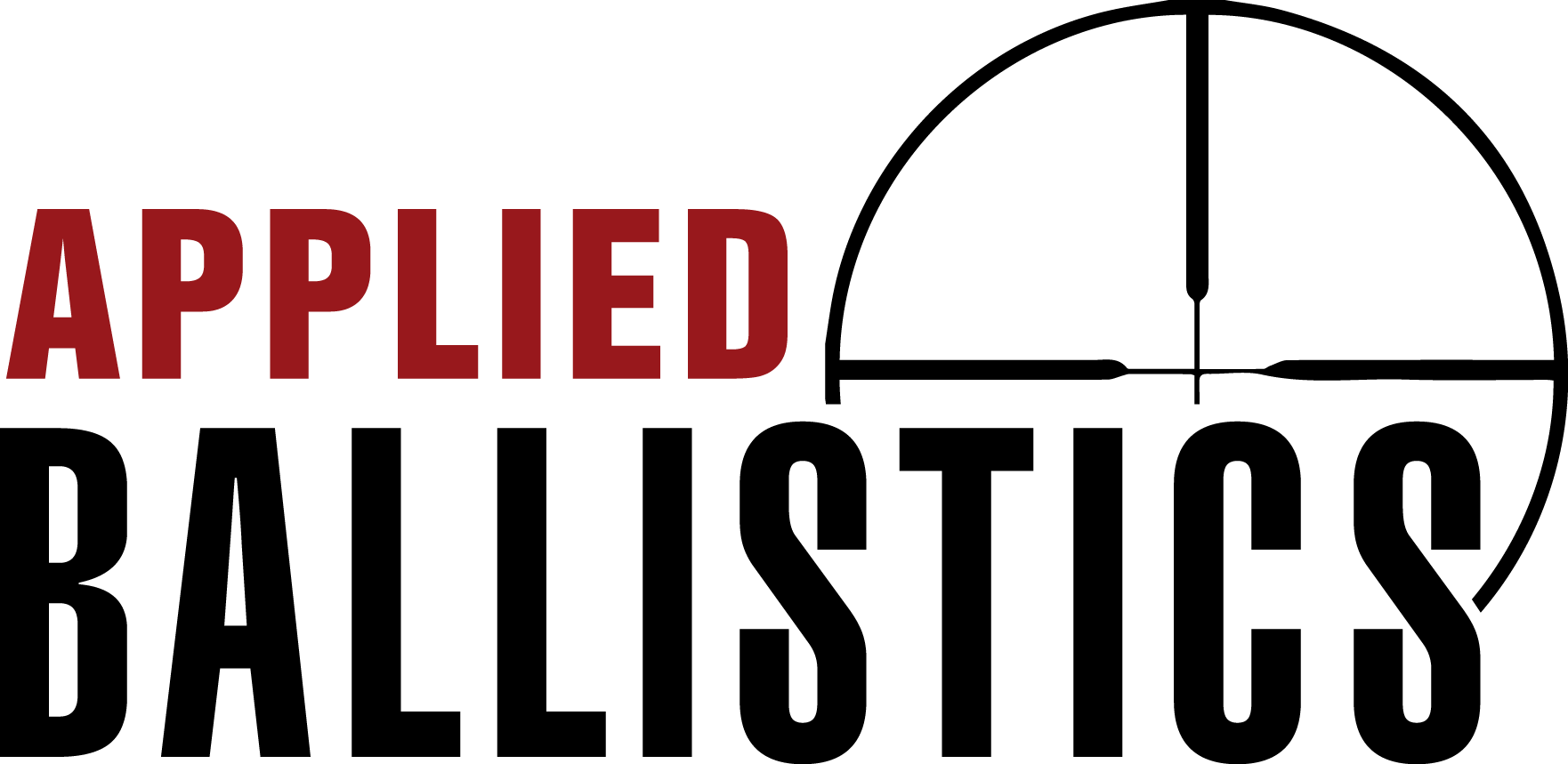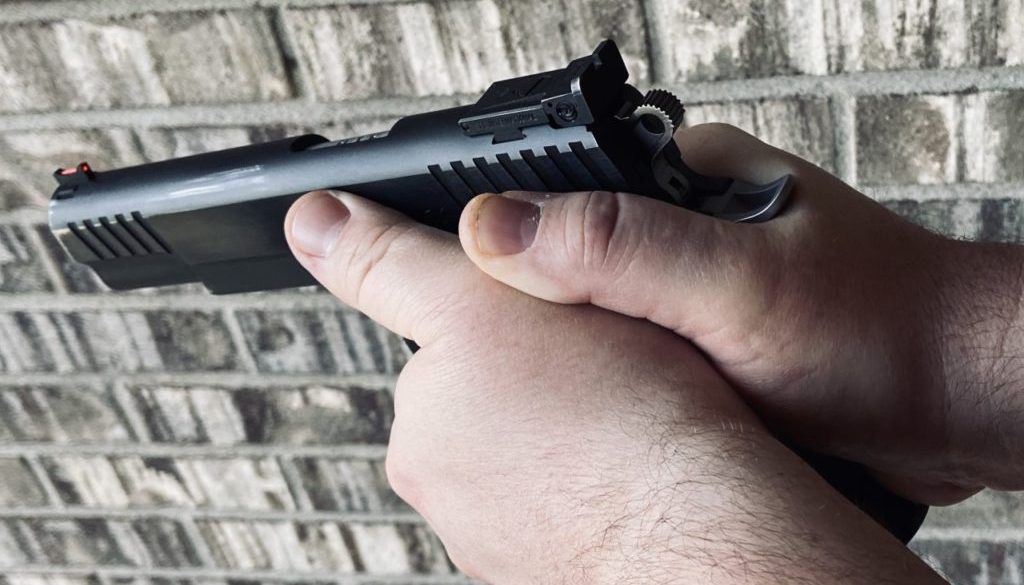How Hard Should I Grip the Gun?
How Hard Should I Grip the Gun?
In this segment I’m going to talk about another commonly misunderstood aspect of shooting quickly, grip tension. This won’t be specific to grip mechanics, such as hand positioning, but rather just how hard you should grip the gun while shooting.Let me start by pointing out that this isn’t directed at a new shooter, but it isn’t bad for a new shooter to hear. What I mean by that is having a brand new shooter who is first learning to fire a handgun, and is most likely using something like a .22LR target pistol, grip tension will not be a significant issue. I’ll get into more detail about this later.
I will also point out that a good grip, and good grip tension, is absolutely not necessary to make an accurate shot with a handgun. As I tell all my students in beginner classes, all you have to do to hit where you want is align the sights correctly and press the trigger without moving the sights. That can be done with a terrible grip. What can’t be done with any consistency is maintaining accuracy in rapid multi-shot strings with a poor grip and/or poor grip tension.
So what is proper tension?
I advocate a very firm grip. When I say “very firm” I mean you should hold onto the gun hard. While this will be relative to the shooter (not everyone has the same hand strength) the best way I can describe it is to use as much tension as you can comfortably maintain while shooting. When I shoot a pistol in a course of fire and then holster afterward if I look at my hand I can literally see every single bump, crease, and groove from the grip imprinted onto my hand. An important note here is that much of the tension that creates this is from my support hand, even though you see it on my firing hand. Many shooters dramatically undergrip with their support hand.
To put a number to it I picked up a gauge on Amazon that allows you to measure grip strength in your hand. My firing hand (right hand) consistently measures around 150lbs of grip. I don’t use all of that when gripping my pistol, I’d be shaky and couldn’t maintain it for long, but I attempted to mimic a one handed firing grip on the gauge and I’m generally between 90lbs and 110lbs of grip pressure with my firing hand, so about two thirds or 67% of my maximum grip pressure. When using a polymer framed gun I can often feel the grip flexing a bit of I’m doing dry fire without a magazine.
How does this help?
Simply put, the tighter you hold the gun the less it can move. The less it moves the less time it takes for the sights to reset, the less distance your eyes have to track the sights, and the less you have to force the gun back onto the target. Everything is more efficient. In my How Can I Shoot Faster? segment nine days ago I talked about training for speed shooting. One of the things I found during my Bill Drill training was that the harder I held the gun the faster I could shoot that drill. A big part of bringing down my times was learning to simply hold the gun tighter.Why do instructors tell students to loosen their grip?
Remember when I said this isn’t exactly directed toward new shooters? Well, that is true to a degree. In fact, when I’m trying to teach someone the most basic fundamentals of shooting I will sometimes have them loosen their grip a bit, in their firing hand, if they are struggling with a very specific issue. By gripping less tightly with the firing hand it is sometimes possible to mitigate the sympathetic response between fingers of the firing hand. When an untrained trigger finger presses the trigger, it is common for the other fingers of the same hand to increase tension as well. We call this “milking the grip” and it tends to push shots to the shooter’s support side (right handed shooters will push to the left).Having a student loosen up their firing hand while tightening their support hand can reduce this drift but it is only part of the solution, it just helps until they gain proficiency with other skills including isolating the movement of their trigger finger. The trouble is, many instructors don’t have students increase grip with their support hand and/or never mention later that increasing grip with the firing hand to a degree is better when it can be done without negative effects on accuracy. I have heard instructors repeatedly tell students to relax their grip over the years with no other explanation or details given. The worst example was an instructor that told a student to hold his pistol like he was holding his child’s hand. This was a police trainee in his 20s firing his duty pistol, by the way, not a brand new shooter with a .22 target pistol.
Give increasing grip pressure a try. You should find that the gun itself is more controllable. With some practice you’ll find shooting quickly while maintaining accuracy easier to accomplish.

